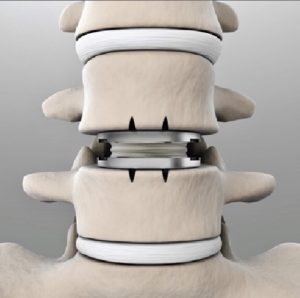Disc replacements are frequently in the news and I am often asked about them. I thought I would mention them today as there was recently a discussion about them at IMAST 2019 (International Meeting on Advanced Spine Techniques), one of the big spinal conferences.
Disc replacements have been around a long time and were initially hoped to be the spinal equivalent of hip and knee replacements. Unfortunately, so far this has not been the case and studies have not supported there widespread use; although hopefully this will change in the future with more research and technological advancements.
At the IMAST conference in USA there was concern from the spinal community about the results produced from some recent studies. They felt that they needed to be viewed with “caution” as “the differences found between disc replacement and fusion in protecting the adjacent levels is not as large as these studies have shown”. They added that all these results are from studies run by the industry (ie the companies making the disc replacements) and that the results were potentially biased. So far there is not enough long term evidence that supports the use of disc replacements in the lumbar spine apart from in a very small group of young patients.
One of the consultants interviewed felt that the key to treatment is “patient selection”. Disc replacement can possibly be used in young patients with few levels, no deformity, no instability, no facet disease (no wear and tear or degeneration) and less then 50% of disc height loss. Unfortunately the majority of patients do not fit into this group.
So watch this space for news on disc replacements in the lumbar spine.
In the England the current NICE guidelines (1.3.10) state “Do not offer disc replacement in people with low back pain”. (National Institute for Clinical Excellence, NICE, guidelines are evidence-based recommendations for healthcare in England)



